Debunking 5 Common Myths About Cord Blood Banks | Cordlife Medical Philippines Inc.
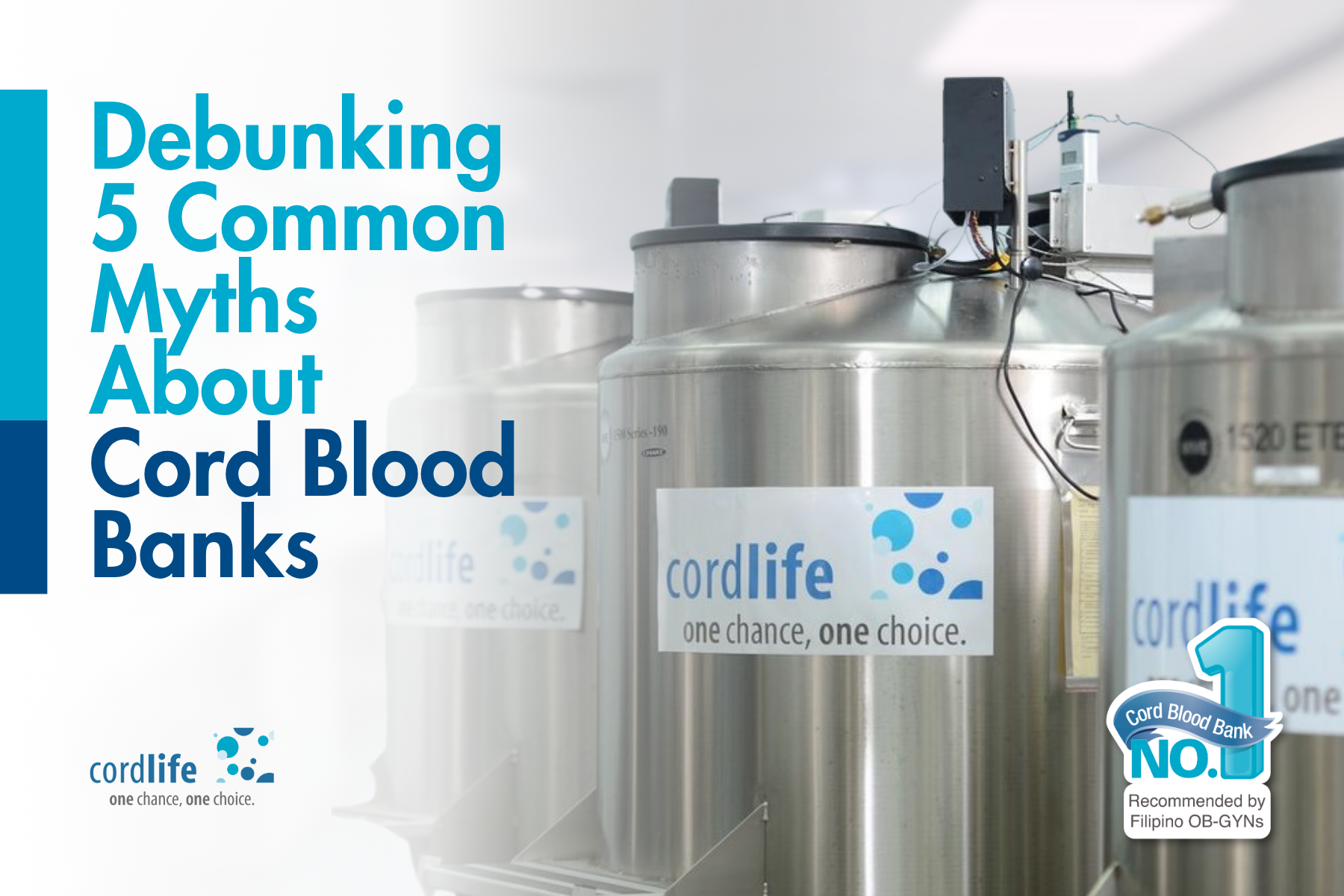
Debunking 5 Common Myths About Cord Blood Banks
As regenerative medicine continues to advance, cord blood banking is becoming an increasingly important topic. In the Philippines, more parents are choosing to preserve their baby’s umbilical cord blood, recognizing it as a rich source of stem cells with the potential to treat a wide range of diseases.
In fact, Cordlife Medical Philippines has already helped over 20,000 Filipino parents bank their newborn's cord blood for future use. However, common misconceptions can create confusion and worry. To help you make an informed decision, let us uncover five common myths and debunk the uncertainties surrounding cord blood banking.
Myth #1: Cord Blood Collection Is Risky and Painful
Collecting umbilical cord blood is a safe and non-invasive procedure. After birth, the cord is clamped and cut—a routine step that naturally separates the baby from the placenta. Since the cord has no nerve endings, the process is completely painless for both mother and child.
Cordlife Medical Philippines supports families by supplying sterile collection kits to clients which they will have to bring with them to the hospital on the day of delivery. These kits are designed to ensure proper handling and secure storage, giving parents confidence that the process is safe and does not affect the health of either mother or baby. Standby kits are also available in select major hospitals, and OB-GYNs as well as delivery room staff regularly undergo training on cord blood collection.
Myth #2: Cord Blood Is Impractical
Stem cells from cord blood are used in the standard treatment of over 80 life-threatening conditions, including:
- Blood Cancers: Cord blood transplantation offers a safer alternative to bone marrow transplants, with lower risks of complications and reduced radiation exposure.
- Blood Disorders: Cord blood helps regenerate healthy blood cells and can provide a higher chance of a match compared to traditional sources like peripheral blood.
- Inherited Metabolic Disorders: Through hematopoietic stem cell transplantation (HSCT), faulty cells can be replaced with healthy stem cells to restore normal metabolic function.
- Immune System Disorders: Stem cell transfusions from cord blood can strengthen the immune system, with a higher likelihood of finding a suitable immunological match.
Cordlife Group has successfully facilitated multiple releases of cord blood units for various conditions such as leukemia, thalassemia major, autism, and cerebral palsy among others - demonstrating its commitment to safe keep the samples in its facility until such time that they are ready for use to help address a wide range of medical needs.
Myth #3: Public Donation Is More Accessible Than Private Banking in Obtaining Cord Blood
In most cases, the choice to store cord blood depends on your family’s needs. Here is a quick look at their pros and cons to help you weigh your options:
- Public Donation: Free and altruistic, with the potential to save lives; however, there is no guarantee the cord blood will be available for your family if needed later; and since public banks are not yet available in the Philippines, it makes it inaccessible to families.
- Private Banking: Provides secure access for your child or compatible family members and acts as biological insurance; the main drawback is the cost of storage.
Many families in the Philippines opt for private banking with Cordlife Medical Philippines, which offers cord blood, cord tissue, and cord lining banking for added peace of mind.
Myth #4: All Cord Blood Banks Are the Same
Cord blood banks follow similar collection methods, but their processing and services can differ significantly. In the Philippines, the main providers include Cordlife Philippines, Stemcord, and Biohellenika.
Cordlife stands out for its value-added services, such as Cordlife Shield pregnancy insurance, Cordlife Transplant Care transplant financial coverage, and protection for up to three generations of a family. Its facility is AABB-accredited and ISO-certified, ensuring high-quality standards for local processing and storage.
Choosing a cord blood bank may take time, but comparing their health benefits, services, and processing methods can help families make an informed decision.
Myth #5: Cord Blood Banking Is Expensive
Cord blood banking may be more financially accessible than you assume. Cordlife Medical Philippines has designed its services to be within reach for a wide range of families by offering flexible payment plans. These options are structured to accommodate various family budgets and help make this important health decision more manageable.
To make this easier, Cordlife Medical Philippines offers flexible payment terms and convenient modes of payment. Plans start at just ₱10,000+ per month for 36 months, already inclusive of an 18-year storage period.
We suggest exploring our installment plans for families seeking flexible payment options. However, the most suitable choice is ultimately a decision you and your family should make based on your specific needs.
Final Words
Making important decisions about life and health can feel overwhelming, but clearing up misconceptions can truly help. Cord blood banking is a safe and painless procedure, offering numerous treatment possibilities for cancers, blood disorders, and immune system deficiencies through its valuable stem cells. Choosing a reputable cord blood bank is a practical and proactive step in safeguarding your family's health.
Ready to learn more about cord blood banking for your family? Schedule a consultation with Cordlife Medical Philippines today.
FAQs About Cord Blood Banking
Is cord blood banking worth it?
Yes, cord blood banking is widely considered a valuable investment in your family's long-term health. The process provides significant medical benefits and is both safe and painless. Furthermore, using a child's own cord blood stem cells for treatment carries a much lower risk of complications compared to a donor's, making it a powerful safeguard against serious illnesses like cancer.
Is Cordlife a reliable cord blood bank?
Yes, Cordlife Medical Philippines is a reliable choice. The local facility ensures quick access to your baby's stem cells. As the country's first and only cord blood bank accredited by the AABB and SGS with the ISO 9001:2015 certification, Cordlife guarantees high-quality, international standards for processing and storage.
How long can cord blood be stored?
Cord blood can be stored for an extended period, with studies demonstrating viability for over 20 years. When properly cryopreserved, there is currently no set expiration date, and the stem cells can retain their viability for long periods.
Ready to Learn More?
Sit down with our Cordlife representatives to discover how you can secure cord blood, cord tissue, and cord lining banking for your family.
For a limited time this October, enjoy exclusive freebies and eGifts!
Recent Blog Posts
- 24 October 2025
- 24 October 2025
- 21 October 2025
- 09 September 2025
- 20 August 2025
Why More Parents Are Choosing Cordlife: The Benefits of Cord Blood Banking

Why More Parents Are Choosing Cordlife: The Benefits of Cord Blood Banking
More parents today are looking for proactive ways to safeguard their children’s long-term health, going beyond routine healthcare. One option gaining attention is cord blood banking, a service offered by companies like Cordlife Medical Philippines.
As awareness grows, it's crucial to understand what cord blood banking is and how preserving a newborn's stem cells can benefit your family's health.
What Is Cord Blood Banking?
Cord blood banking involves collecting and storing the blood left in a newborn’s umbilical cord after delivery. This blood is rich in hematopoietic stem cells, which can be used in the future for transplants or regenerative therapies to treat various medical conditions.
The process is simple, safe, and non-invasive. After birth, the umbilical cord is clamped and cut as usual, and the remaining blood is collected in a sterile bag. It is then transported to a specialised facility, where the stem cells are carefully processed and cryopreserved for long-term use.
Why Parents Are Considering Cord Blood Banking in the Philippines
Cord blood banking offers families peace of mind by providing a readily available source of stem cells that can be used for life-saving treatments. These stem cells have been proven effective in treating over 80 serious conditions, including certain blood disorders, immune deficiencies, and cancers. By replacing faulty or diseased cells with healthy ones, cord blood transplants can offer long-term and sometimes permanent cures.
The procedure is safe and non-invasive, as cord blood is collected after birth without any risk to the mother or baby. This makes it a convenient and secure option for families looking to prepare for future health needs.
In the Philippines, awareness of cord blood banking is growing. Many expectant parents learn about its benefits during prenatal classes or consultations with their OB-GYNs, leading to more families making informed decisions to preserve their baby’s cord blood. As knowledge spreads, more individuals gain access to advanced treatments that could make a life-changing difference.
Read more: Debunking 5 Common Myths About Cord Blood Banks
Key Considerations When Choosing a Cord Blood Bank in the Philippines
Choosing the right cord blood bank is a crucial decision for parents who want to secure their child’s future health needs. While many providers may seem similar at first glance, there are key differences to consider:
Collection Process
Cord blood collection should always be safe and secure. That’s why Cordlife provides a specialized collection kit for use during delivery. It includes cryo-storage pouches and uses an aseptic technique with an iodine swab before collection - ensuring your baby’s precious stem cells are well-preserved and fully protected.
Laboratory Location
The speed of processing is crucial for maintaining the viability of stem cells. For this reason, laboratories should be located close to collection sites to avoid delays that could compromise the sample's quality.
Cordlife addresses this need with its secure ISO 9001:2015-certified and AABB-accredited storage facility in Metro Manila, which operates 365 days a year.
Storage Facilities and Access
Private cord blood banking gives families full ownership and immediate access to their samples in urgent situations. In contrast, public banks require a donor search, which can take time and may not guarantee a match.
Value-Added Services
Some banks, such as Cordlife Philippines, provide additional services like pregnancy insurance or transplant financial assistance, giving families added security and peace of mind.
Accreditations and Certifications
Always check a bank’s credentials, such as international certifications and accreditations, like ISO or AABB. This ensures that your child’s cord blood is stored safely and handled according to strict quality standards.
In the Philippines, leading cord blood banks include Cordlife, Stemcord, and Biohellenika. By carefully comparing their services and facilities, you can choose the provider that best fits your family’s needs and lifestyle.

Top Reasons Parents in the Philippines Choose Cordlife
Cordlife’s combination of proven experience, advanced technology, and comprehensive family care programs ensures families can maximize the potential of cord blood banking. By investing in Cordlife, parents secure a reliable resource to protect and heal generations from various health conditions.
Established History and Credibility
Cordlife began its operations in 2001 and has been active in the Philippines since 2009, opening its local laboratory in 2010. It is the first and only cord blood bank in the country accredited by the Association for the Advancement of Blood and Biotherapies (AABB). Moreover, Cordlife Philippines holds the ISO 9001:2015 certification, ensuring compliance with international and national standards.
Advanced Facilities and Secure Storage
Cordlife’s state-of-the-art facility in Quezon City features:
- Cryostorage pouches that ensure a safe and secure handling of samples.
- 30,000-unit storage capacity to serve families nationwide.
- A 24/7 backup and monitoring system to guarantee continuous protection of stored cord blood.
Comprehensive Value-Added Services
Cordlife goes beyond basic cord blood banking by offering extensive services for families:
- Cordlife Shield – Pregnancy and congenital insurance covering seven pregnancy complications and 16 congenital illnesses.
- Cordlife Transplant Care – Subsidies of up to over ₱2 million to offset the cost of stem cell transplants for children, siblings, parents, or grandparents for approved standard treatments to be done at an accredited hospital in the Philippines, subject to the terms and conditions of the contract. (Based on September 2025 conversion rate via OANDA)
- Cordlife Alliance – Access to a regional network of stored units in Asia if the family’s cord blood is not a match.
- Cordlife Blood Network – Support in finding compatible cord blood units for parents and grandparents through partner registries.
- Cordlife Care 360 – Holistic family support and protection across multiple generations.
Beyond these core strengths, Cordlife offers affordable and flexible payment options, making cord blood banking accessible to more families while providing long-term value.
Interested in cord blood banking? Schedule a consultation with Cordlife Medical Philippines today to learn more about its benefits and how it can help your family.
Frequently Asked Questions (FAQs)
What is Cordlife Medical Philippines Inc.?
Cordlife Medical Philippines Inc. is a local AABB-accredited healthcare company that specializes in cord blood banking. The company's facility, located in the Philippines, provides services for the processing and storage of stem cells derived from umbilical cord blood.
Is cord blood banking safe for both mother and baby?
Yes, cord blood banking is completely safe for both mother and baby. The procedure is performed after the baby has been delivered and the umbilical cord is clamped and cut, which is a standard part of the birthing process. No direct blood is drawn from the baby, and the collection does not interfere with the mother's delivery, bonding, or breastfeeding. The entire procedure is non-invasive and painless.
Can my child’s cord blood help other family members?
The biological compatibility varies, but there is a higher chance of being a match for siblings. Before any transplant, a compatibility test is done to ensure the expected outcome.
Ready to Learn More?
Sit down with our Cordlife representatives to discover how you can secure cord blood, cord tissue, and cord lining banking for your family.
For a limited time this October, enjoy exclusive freebies and eGifts!
Recent Blog Posts
- 24 October 2025
- 24 October 2025
- 21 October 2025
- 09 September 2025
- 20 August 2025
Cord Blood vs. Cord Tissue vs. Cord Lining: What’s the Difference and Why Store Them All?
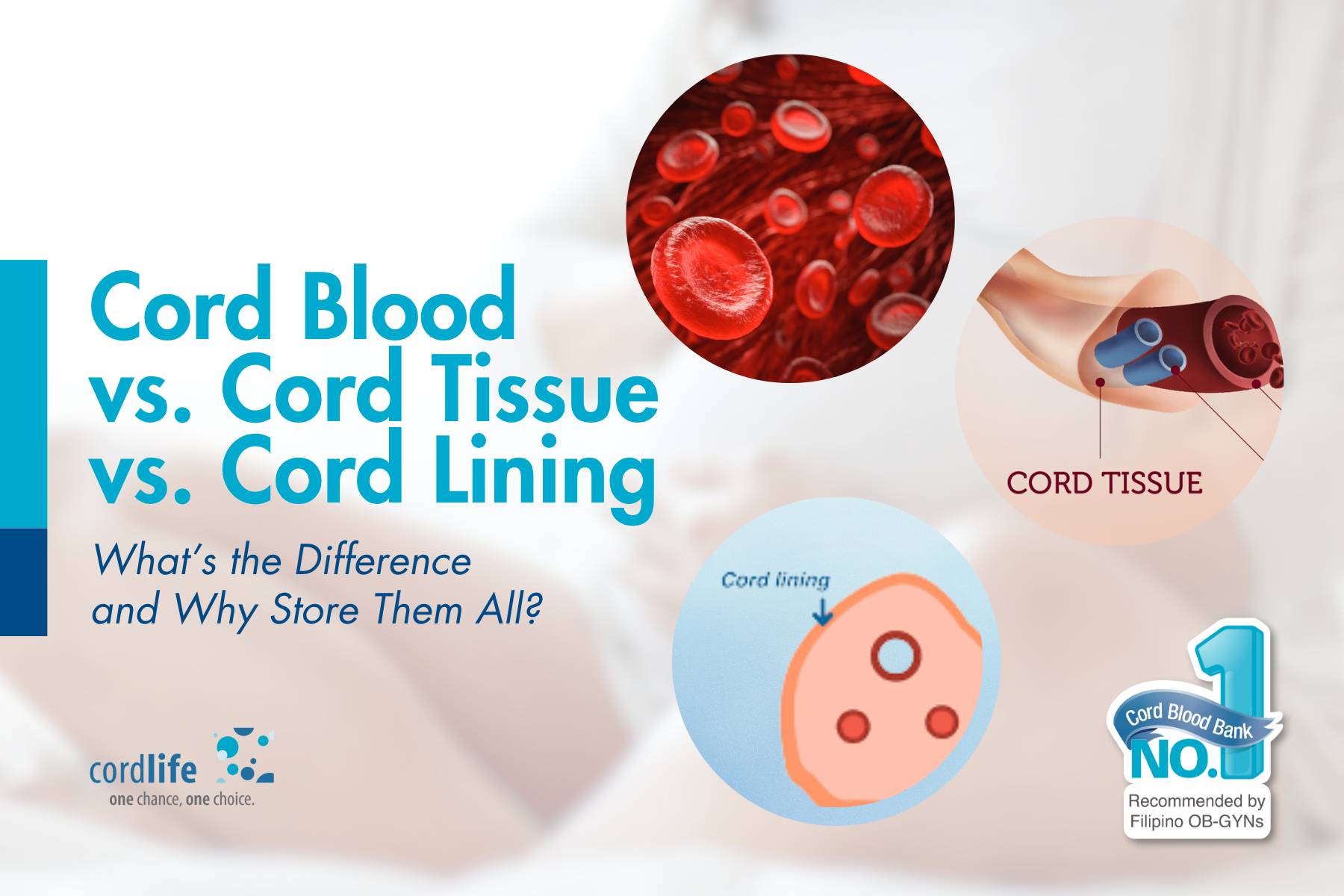
Cord Blood vs. Cord Tissue vs. Cord Lining: What’s the Difference and Why Store Them All?
When parents think of stem cell banking, the first thing they often think about is cord blood banking. But there’s more to the umbilical cord than just blood. Inside the same cord lies cord tissue and cord lining, both rich in stem cells that hold incredible potential for future medical use.
If you’re an expecting parent preparing for your baby’s arrival, here’s a simple guide to help you understand the difference between cord blood, cord tissue, and cord lining, and why storing all of them with a trusted stem cell bank like Cordlife Philippines gives your family the most complete health protection.
What Is Cord Blood?
Cord blood is the blood left inside your baby’s umbilical cord and placenta after birth. It’s a rich source of hematopoietic stem cells (HSCs) - the building blocks of blood and the immune system.
These cells can be used to potentially treat over 80 diseases, including certain cancers like leukemia, blood disorders like anemia and thalassemia, and immune and metabolic disorders.
At Cordlife Philippines, your baby’s cord blood is processed and cryopreserved in the first and only ISO-certified and AABB-accredited laboratory in the Philippines, giving families peace of mind that samples are safely stored should your family ever need it for a transplant or treatment.
What Then Is Cord Tissue?
Cord tissue, on the other hand, refers to the gel-like material of the umbilical cord itself (also called Wharton’s Jelly). It contains a different type of stem cell, mesenchymal stem cells (MSCs), which have the ability to develop into bone, cartilage, fat, and muscle cells.
MSCs are being studied for their potential in regenerative medicine, including therapies for heart disease, diabetes, stroke, spinal cord injury, and more.
Cordlife Philippines is one of the few stem cell banks in the Philippines that offers cord tissue banking, allowing families to benefit from the future potential of MSCs.
Okay, and Can You Tell Me About Cord Lining?
Cord lining, the outermost layer of the umbilical cord or what they refer as “the cord itself”, is another rich source of both cord lining epithelial cells (CLEpSCs) and mesenchymal stem cells (MSCs), giving you a chance to store one more type of stem cells.
- Epithelial stem cells help with wound and soft tissue repair and eye conditions
- Mesenchymal stem cells support tissue repair, immune modulation or reconstruction
Cord lining stem cells are being explored for their potential in wound healing, skin regeneration, tissue repair, and immune-related conditions.
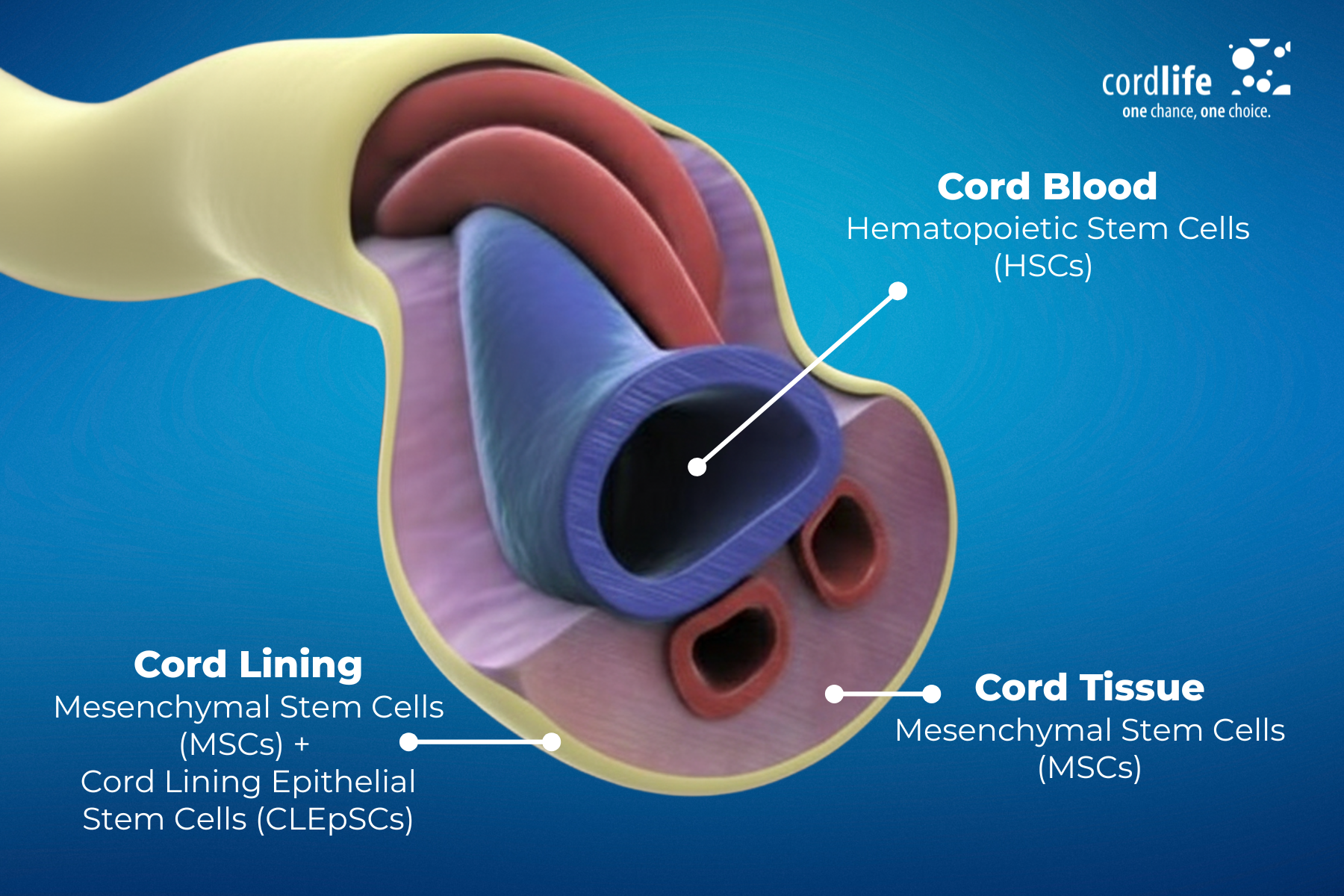
Why store all three?
Storing both cord blood and cord tissue gives your family a more comprehensive health protection:
- Cord blood (HSCs) treats blood and immune system and metabolic disorders
- Cord tissue (MSCs) offers regenerative potential to repair and regenerate tissues and organs.
- Cord lining (MSCs and CLEpSCs) gives you a chance to store another type of stem cells apart from MSCs which help with wound healing and eye disorders.
Together, they provide a powerful combination of healing and regeneration, addressing both current and emerging medical possibilities.
Future-Proofing Your Family’s Health
Medical research in stem cell therapy continues to evolve rapidly. By banking cord blood, cord tissue, and cord lining today, you’re not only safeguarding your child’s current health but also future-proofing your family’s access to life-changing medical innovations.
Cordlife Philippines’ advanced facilities, experienced biotechnologists, and medical experts ensure that your baby’s precious stem cells are in the best hands, starting from collection to storage.
Ready to Learn More?
Sit down with our Cordlife representatives to discover how you can secure cord blood, cord tissue, and cord lining banking for your family.
For a limited time this October, enjoy exclusive freebies and eGifts!
Recent Blog Posts
- 24 October 2025
- 24 October 2025
- 21 October 2025
- 09 September 2025
- 20 August 2025
Cordlife Philippines: Frequently Asked Questions about Stem Cell Banking

Cordlife Philippines: Frequently Asked Questions about Stem Cell Banking
You've probably heard about cord blood banking and/or umbilical cord stem cell banking and may be curious about learning more. What does it really mean to collect and store the stem cells, and why are more Filipino families choosing Cordlife Philippines?
We’ll answer your top questions and help you understand how Cordlife offers an unparalleled level of security, expertise, and innovation in stem cell banking.
1. What is Cord Blood and Why is it Valuable?
Cord blood is the blood collected from your baby’s umbilical cord after birth. It’s rich in hematopoietic stem cells (HSCs)--the same type of stem cells used in bone marrow transplants.
These stem cells can potentially treat over 80 life-threatening diseases such as leukemia, thalassemia, and certain immune and metabolic disorders. Clinical trials are also exploring their potential in regenerative medicine, such as treating cerebral palsy and autism.
2. What is Umbilical Cord Stem Cell Banking?
Umbilical Cord Stem Cell Banking is the process of collecting, processing, and storing stem cells from the umbilical cord of a baby for future medical use. When you choose cord blood banking, you’re preserving your child’s valuable biological resource--one that’s a perfect match for them and possibly for the siblings or family members.
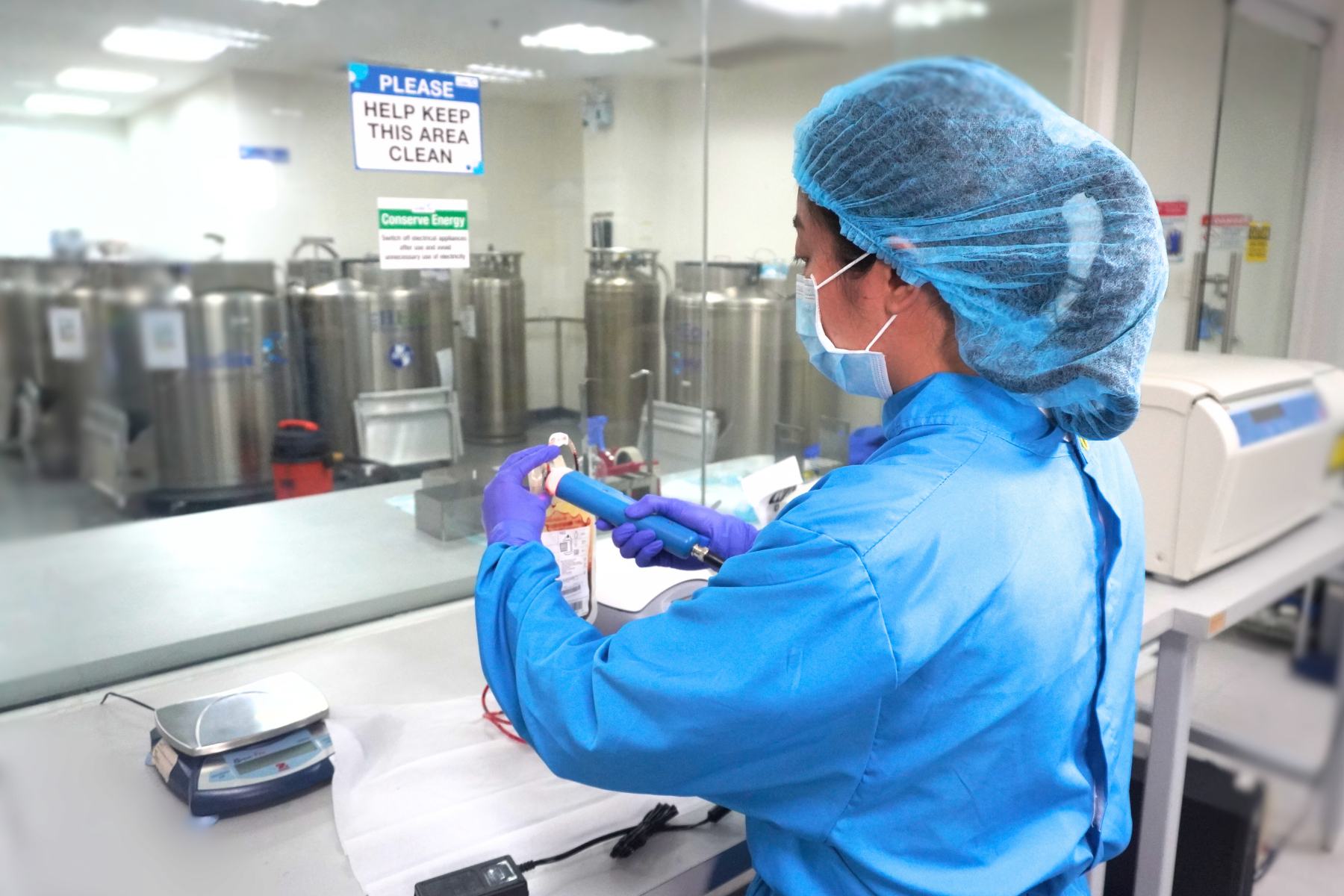
3. Why Choose Cordlife Philippines for Umbilical Cord Stem Cell Banking?
Cordlife Philippines is part of the largest network of private cord blood banks in Asia, and the group it belongs to has over 20 years of experience. Here are other things that set Cordlife Phlippines apart:
a. ISO-Certified and AABB-accredited
Cordlife Philippines is the first and only ISO 9001:2015-certified and AABB-accredited (Association for the Advancement of Blood and Biotherapies) facility in the country.
Being AABB-accredited means that cord blood released from our facility adheres to the highest global standards and stringent requirements for cellular therapy. Major therapy centers both here and abroad will require cord blood units from accredited facilities only.
b. 24/7 Real-Time Laboratory Monitoring System
Cordlife Philippines has 24/7 real-time monitoring of its storage facility, onsite and remotely, providing round-the-clock protection of your child’s stem cells.
c. Licensed Trained and Completent Biotechnologists
Only licensed medical technologists and biotechnologists handle your baby’s cord blood sample.
Cordlife Philippines biotechnologists are highly trained and skilled in stem cell processing, testing, and storage. Before handling actual samples, they undergo a rigorous training & exercise period of four months to ensure proper sample management. This training is further reinforced through annual competency assessments and continuous education, keeping them updated on the latest advancements and best practices.
d. Over 20,000 Filipino Parents Have Chosen Cordlife
Since it started its local operations, there have already been more than 20,000 Filipino Parents who have entrusted their baby’s stem cells with Cordlife Philippines
4. How is Cord Blood Collected? Is it Safe?
Yes, collecting cord blood is safe, quick, and painless for both mother and baby. After your baby is born and the umbilical cord is clamped and cut, your OB-GYN or trained medical practitioner or delivery room staff will collect the remaining blood in the cord using a sterile kit provided by Cordlife Philippines.
5. How Long Can Cord Blood Be Stored?
Studies suggest that under certain cryogenic conditions such as using liquid nitrogen and keeping the temperature at or below -150°C, cord blood stem cells can be stored indefinitely and remain viable*.
The Estimated shelf life in cryopreserved state: 1,000 years**
* Liedtke S, Tobben S, Holger G, et.al. Long-term stability of cord blood units after 29 years of cryopreservation: follow-up data from the Jose Carreras cord blood bank. Stem Cells Translational Medicine. 2023; XX (1-13). DOI: https://doi.org/10.1093/stcltm/szad071.
** Karlsson J, Toner M. Long-term storage of tissues by cryopreservation: critical issues. Biomaterials. 1996; 17(3): 243-256.
6. Can Cord Blood Be Used by Other Family Members?
Yes, cord blood may be used not only by your baby or the owner of the cord blood, there’s a high chance of a match between siblings, and since each child is genetically unique, banking for each child ensures each has their own perfect match while also increasing the chances of a suitable match within the family, which is why many parents choose to bank cord blood for each child.
*For other types of stem cells found in the cord lining and cord tissue, matching is potentially unnecessary, making it useful for other family members.

7. How Do I Enroll with Cordlife Philippines?
The process is simple:
- Schedule a Free Consultation with our Client Relationship Executives – Learn more about your options.
- Enrollment – Choose the right banking plan for your family and sign up thereafter
- Get Your Personalized Collection Kit – This kit will have to be brought to the hospital and endorsed to your OB-GYN or the delivery room staff when you give birth.
- Collection and Transport – Cordlife Philippines’ team picks up the sample within 24 hours after collection.
- Processing and Storage – Your baby’s cord blood is processed and safely stored in Cordlife’s high-security cryogenic facility.
Choosing to bank your baby’s cord blood is a once-in-a-lifetime decision. With Cordlife Philippines, you gain a trusted partner dedicated to helping protect your family’s future through world-class stem cell banking services.
To learn more or schedule a consultation, visit www.cordlife.ph/make-an-appointment and find out about our ongoing promotions.
Learn more about stem cell banking today
Unlock essential knowledge about umbilical cord stem cell banking and be more prepared for the arrival of your little one with Cordlife Philippines' Information Pack.
Recent Blog Posts
- 24 October 2025
- 24 October 2025
- 21 October 2025
- 09 September 2025
- 20 August 2025
Cordlife Philippines Earns Back-to-Back AABB reaccreditation and ISO recertification

Cordlife Philippines Earns Back-to-Back AABB reaccreditation and ISO recertification
We’re proud to share that Cordlife Philippines has once again achieved AABB reaccreditation and ISO 9001:2015 recertification, a testament to our unwavering commitment to world-class stem cell banking services.

The AABB (Association for the Advancement of Blood and Biotherapies) accreditation recognizes excellence in cellular therapy services. This international gold standard confirms that our quality and operational systems meet and even exceed the rigorous requirements set by the AABB Standards Committees.

Meanwhile, the ISO 9001:2015 certification from SGS highlights our consistent ability to deliver products and services that meet both customer expectations and strict regulatory requirements, backed by a strong quality management system.

With these recognitions, Cordlife Philippines remains the first and only cord blood bank in the country to hold both prestigious credentials, a distinction we’ve proudly maintained since 2017 for AABB and 2012 for ISO.
For every family we serve, these seals are more than just certificates. They are our promise to provide the highest standards of service, processing, and long-term storage for your child’s umbilical cord blood stem cells – today and for years to come.
Learn more about stem cell banking today
Unlock essential knowledge about umbilical cord stem cell banking and be more prepared for the arrival of your little one with Cordlife Philippines' Information Pack.
Recent Blog Posts
- 24 October 2025
- 24 October 2025
- 21 October 2025
- 09 September 2025
- 20 August 2025
Cordlife Philippines Elevating Stem Cell Banking Safety with 24/7 Real-Time Laboratory Monitoring
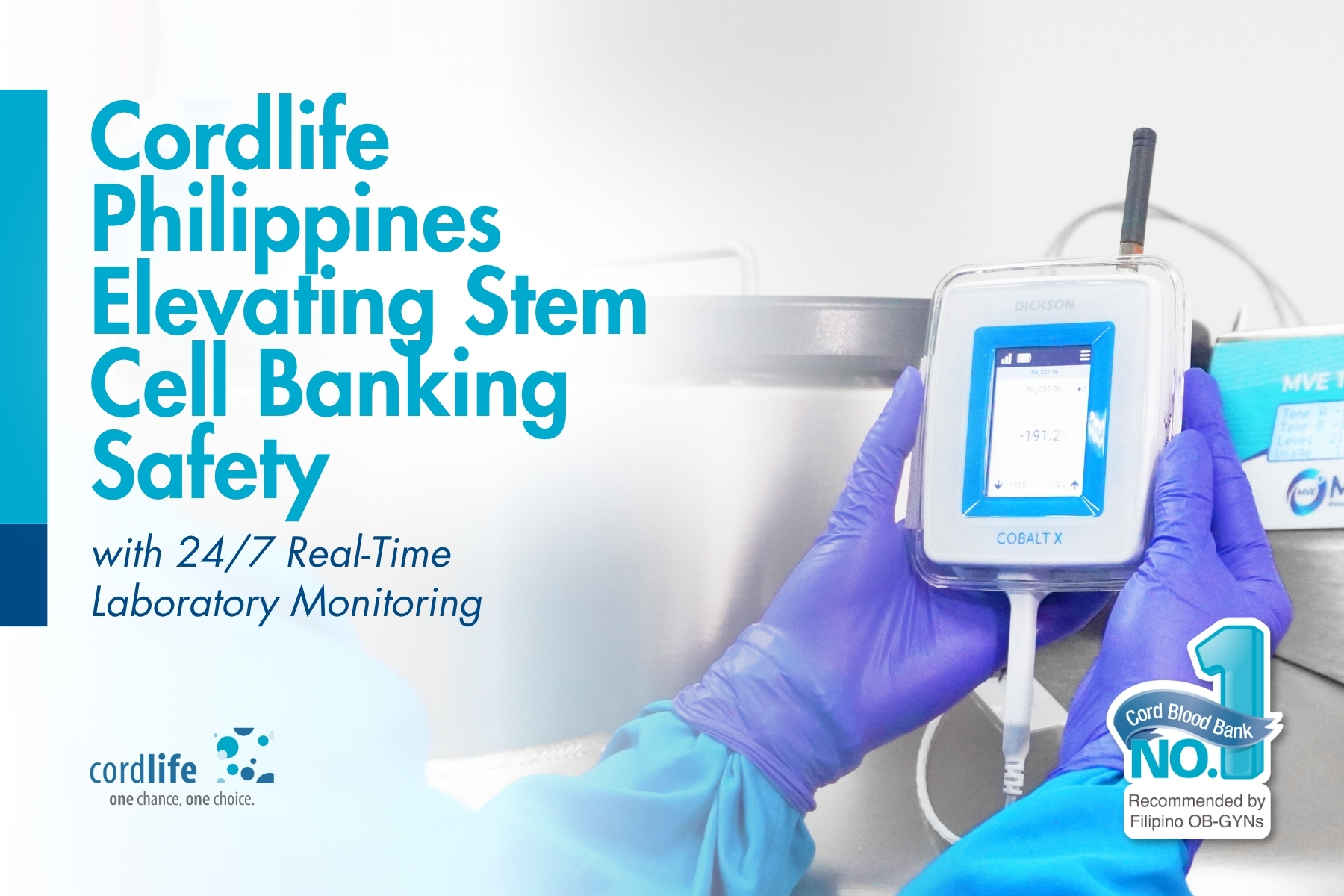
Cordlife Philippines Elevating Stem Cell Banking Safety with 24/7 Real-Time Laboratory Monitoring
As it celebrates its 16th year in the country, Cordlife Philippines continues to invest in cutting-edge technology to provide worry-free, world-class stem cell banking services to Filipino families.
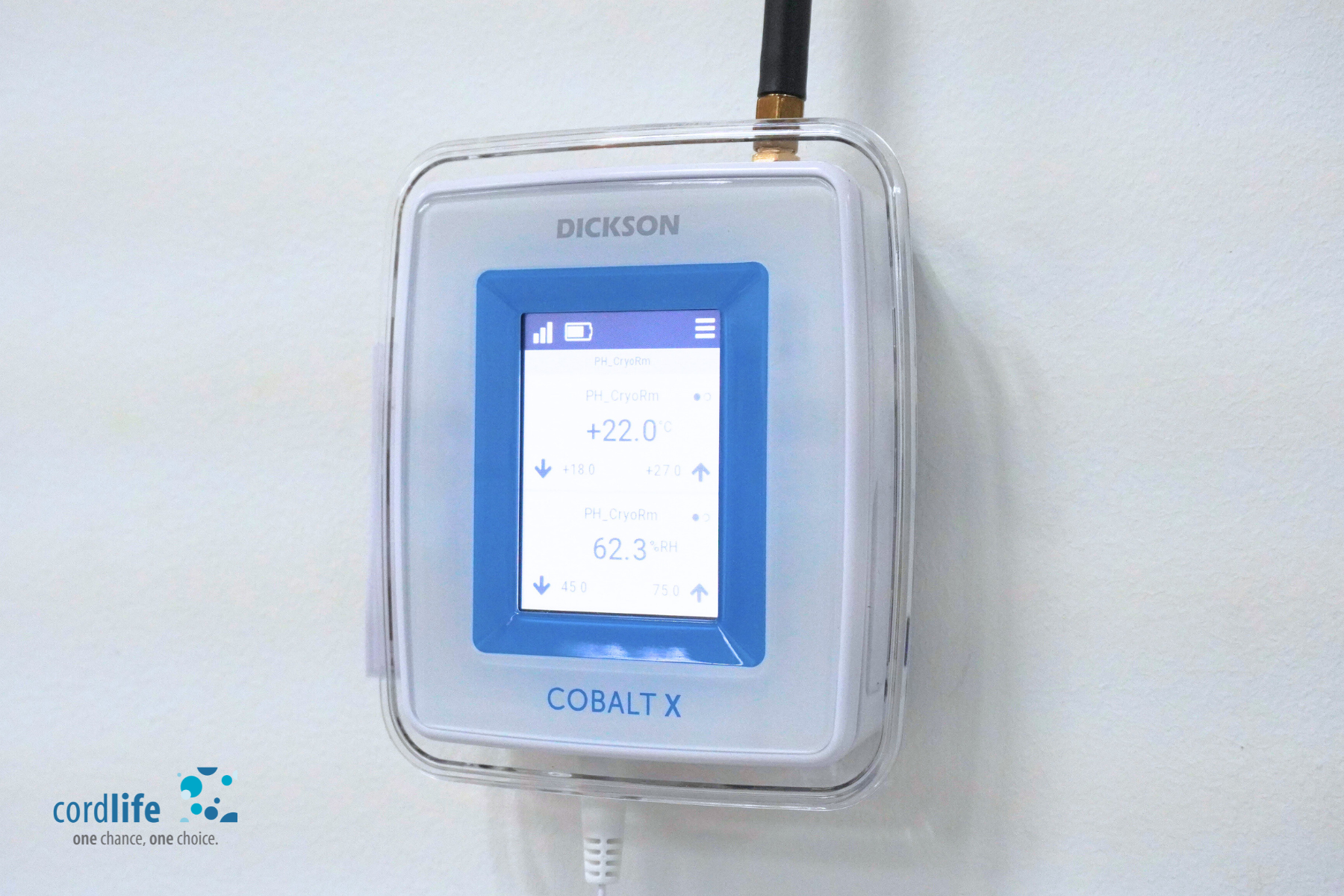
Real-Time Monitoring, 24/7
To further elevate the safety of its facility and stored stem cells, Cordlife Philippines has launched a 24/7 real-time laboratory monitoring system at its processing and storage facility in UP AyalaLand Technohub, Quezon City. This latest innovation is designed to continuously track and maintain optimal conditions of the laboratory and its critical equipment to keep your baby’s stem cells safe and secure - day and night.
The system monitors key environmental factors like temperature and humidity across the lab’s machinery, most especially its cryogenic storage tanks, where cord blood, cord tissue, and cord lining stem cells are cryopreserved. With remote access and on-site controls, the system can detect any fluctuation and immediately trigger alerts via SMS, email, and phone call, ensuring that the right teams are informed and can respond swiftly.
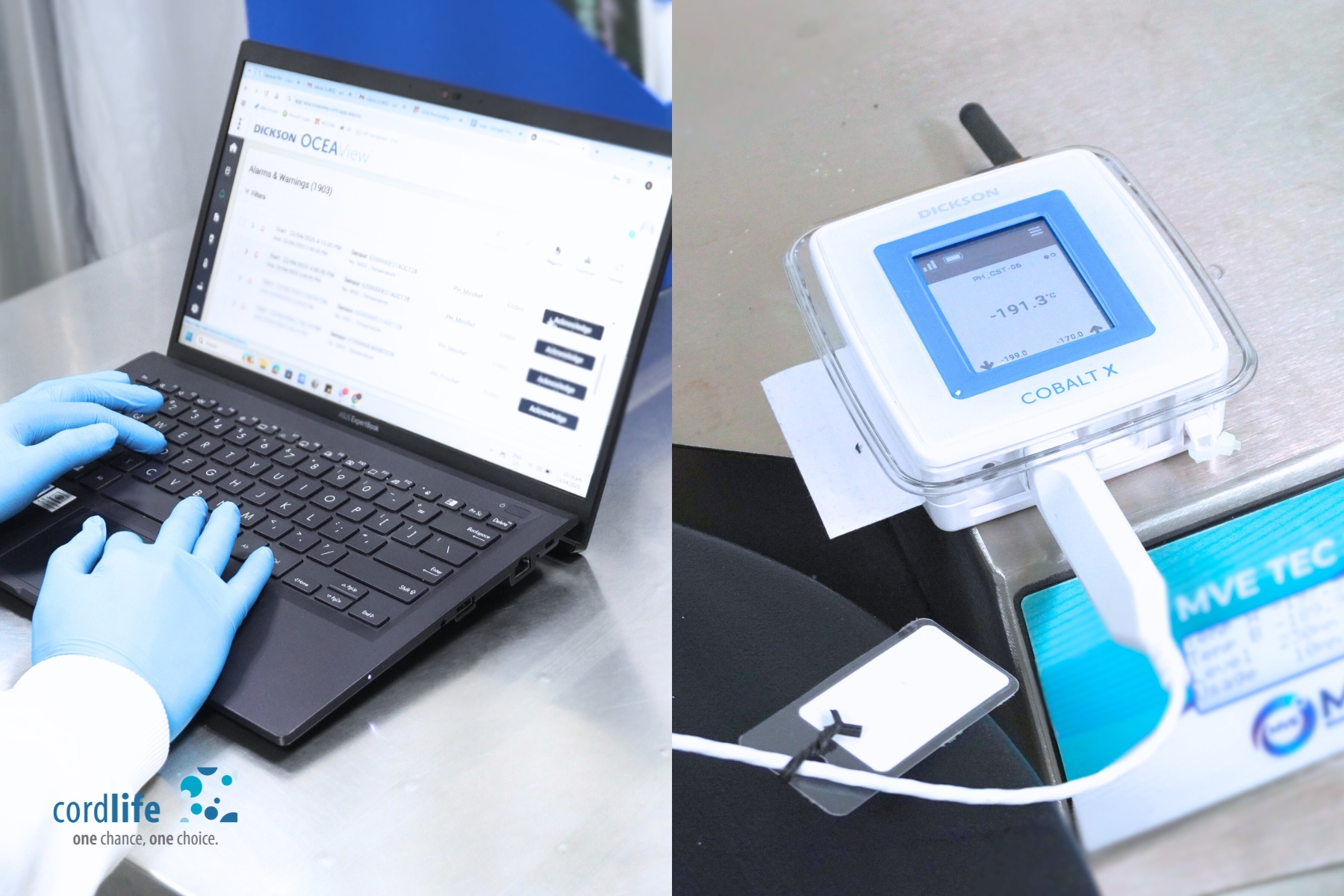
Built for Reliability and Peace of Mind
What makes this system even more powerful is its three-tiered escalation protocol, which guarantees no alert is missed. The web-based dashboard also automates reporting for transparency and accountability- giving parents peace of mind knowing that their child’s stem cells are being monitored continuously by a world-class system.
The monitoring setup is supported by multiple layers of backup, including emergency power, network redundancy, and alarm systems. All these upgrades are compliant with globally recognized standards, including ISO 17025 and the National Institute of Standards and Technology (NIST) in the United States.
At Cordlife Philippines, your baby’s stem cell safety is our top priority. We’ve upgraded to an advanced 24/7 Real-Time Laboratory Monitoring System that safeguards all critical equipment — including six cryogenic storage tanks — with continuous temperature and humidity tracking, both on-site and remotely.
This upgrade reaffirms our commitment to world-class, worry-free stem cell banking- every second of every day.
Dang Vinh Do, Laboratory Director

16 Years of Trusted Stem Cell Banking in the Philippines
With over a decade and a half of trusted service, the company continues to lead the way in the collection, processing, and long-term storage of cord blood, cord tissue, and cord lining stem cells.
For Filipino families who value medical preparedness, stem cell banking with Cordlife offers a chance to secure a valuable biological resource that may one day support treatments for conditions like blood cancers, immune disorders, and even future regenerative therapies.
Learn More About Stem Cell Banking with Cordlife Philippines
As medical innovations continue to evolve, storing your baby’s stem cells today could make a world of difference for tomorrow. With Cordlife Philippines, you can be confident that your family’s future is in safe, expert hands- backed by technology, trust, and a commitment to excellence.

Download Info Pack: P5,000 Gift Pass to 3 lucky downloaders!
Recent Blog Posts
- 24 October 2025
- 24 October 2025
- 21 October 2025
- 09 September 2025
- 20 August 2025
How to Bank Your Baby’s Stem Cells: A 5-Step Guide
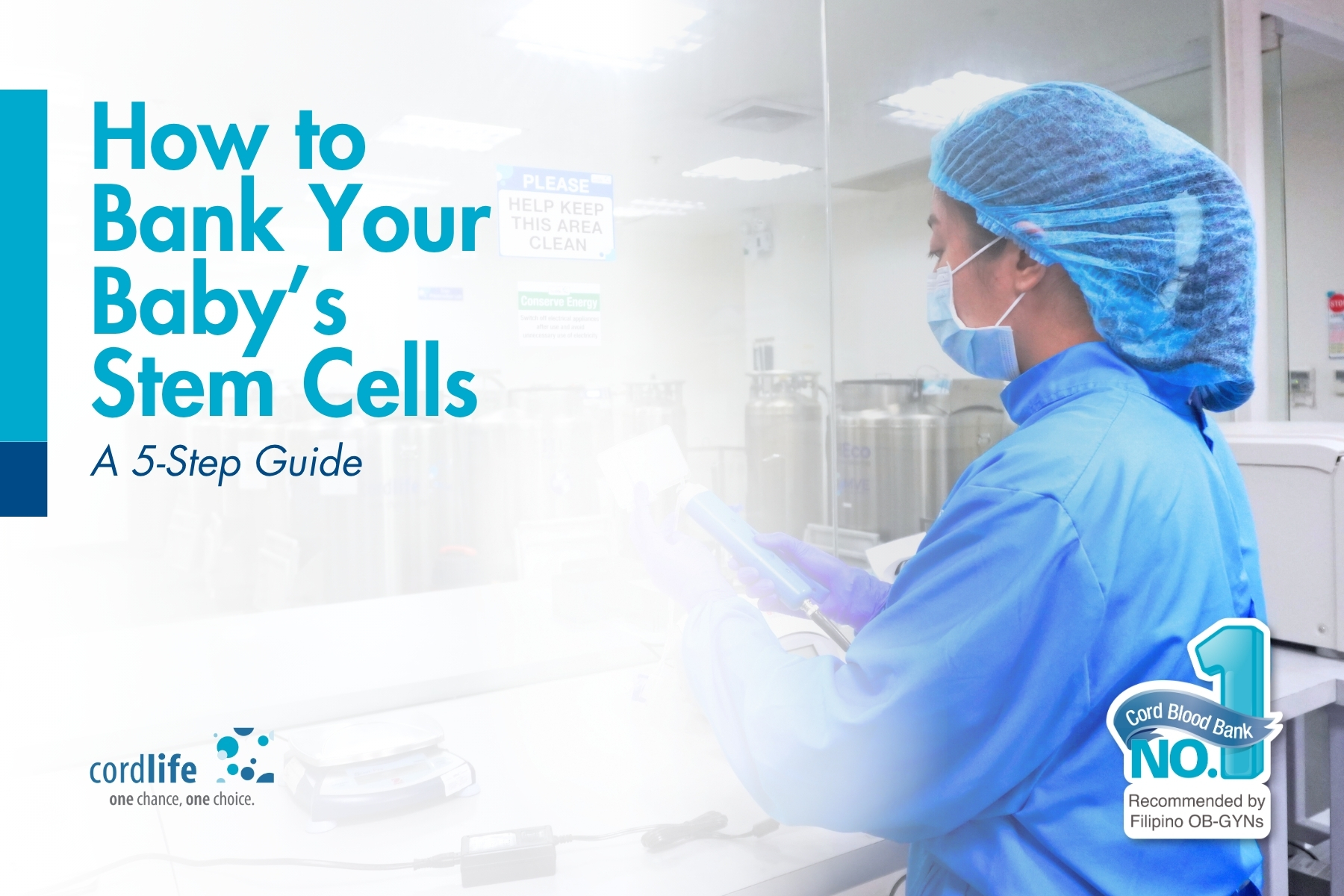
How to Bank Your Baby’s Stem Cells: A 5-Step Guide
Preserving your baby’s stem cells from the umbilical cord is a powerful way to protect your family’s health future.
1. Enrollment in Stem Cell Banking
Cordlife Philippines accepts enrollment from expecting parents whether they are still in the early stages of pregnancy or even making the decision at the last minute. However, since our umbilical cord stem cell banking plans come with free value-added benefits such as Cordlife Shield, a pregnancy insurance that provides coverage as early as 18 weeks -- we encourage you to make this once-in-a-lifetime decision as soon as possible.
Upon enrollment, you will complete the necessary documents and select the type(s) of stem cells you wish to bank. To make the process even simpler, Cordlife offers comprehensive stem cell banking plans that help parents choose the best combination of stem cell options for their family’s future needs.

2. Receive the Cordlife Collection Kit

After enrollment, you will also receive your personalized umbilical cord collection kit/s which you will have to bring with you on the day of your delivery. You must also inform your OB-GYN about your decision to bank your baby’s stem cells.
Don’t worry, for those deciding on the last minute, you can also ask your OB-GYN or the hospital’s delivery room staff if they have a standby kit available.
3. Collection at Birth
The OB-GYN is the main healthcare professional responsible for the collection of the umbilical cord.
Right after your baby is born, the umbilical cord is clamped and cut and the cord blood is carefully collected. If you will also bank your baby’s cord tissue and/or cord lining, a segment of it will also be cut and collected.

4. Fulfillment and Transport to Cordlife Philippines Facility
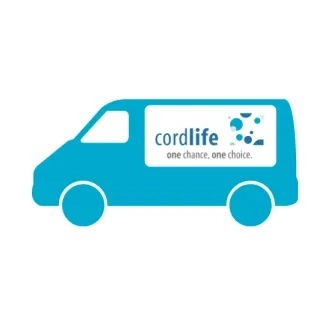
Cordlife Philippines arranges the pick-up of the samples by either a Cordlife staff or a third-party medical courier within 24 hours.
5. Laboratory Processing
After the arrival of the samples at our facility at UP AyalaLand Technohub in Quezon City and within 60 hours from collection, the samples must be processed to be ready for long-term cryopreservation.
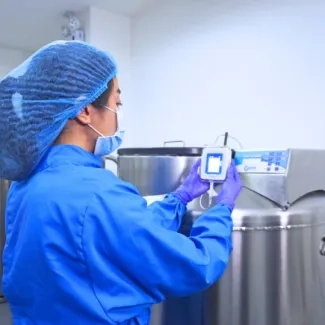
Final Tips and Takeaways
1. You can take advantage of free medical benefits like Cordlife Shield if you decide to bank as early as 18 weeks.
2. Tell your OB-GYN early about your plan to bank your baby’s umbilical cord blood, cord tissue, and/or cord lining.
3. Make sure to include your kits in your delivery bag when you begin your preparation. This ensures that you don’t forget to bring them with you on the day of the delivery.

Banking your baby’s stem cells is a simple and safe process with benefits that cover pregnant moms early in the pregnancy.
Find out more when you book a free consultation today.
Recent Blog Posts
- 24 October 2025
- 24 October 2025
- 21 October 2025
- 09 September 2025
- 20 August 2025
Unlocking the Regenerative Power of Stem Cells: How Pregnancy is Making it Possible

Unlocking the Regenerative Power of Stem Cells: How Pregnancy is Making it Possible
March is International Women’s Month—a time to celebrate the strength and resilience of women, especially mothers. Pregnancy is one of the most transformative experiences a woman can go through, and with it comes the responsibility of making decisions that could impact the future well-being of both mother and child. One such decision is stem cell banking, a breakthrough in regenerative medicine that offers families a unique opportunity to safeguard their health.
What Are Stem Cells and Why Are They Important?
Stem cells are a special type of cells. They have the remarkable ability to differentiate into various types of cells, helping to repair damaged tissues and even treat a wide range of diseases. This unique property makes them invaluable in regenerative medicine, where researchers and doctors use them to develop new treatments for different conditions such as cerebral palsy, autism, cardiovascular diseases, and even degenerative diseases like Parkinson’s and Alzheimer’s.
The Role of Umbilical Cord Stem Cells
For expecting parents, the most accessible and ethical source of stem cells comes from the umbilical cord. Normally thrown away after birth, the umbilical cord is now recognized as a rich source of stem cells, one of which is:
- Mesenchymal Stem Cells (MSCs): Found in the cord tissue and cord lining, MSCs are widely studied due to their remarkable ability to modulate the immune system as well as to repair and restore tissue damage.1 Advancements in stem cell therapeutics have led us into a new era of healthcare where clinical indications once thought untreatable can possibly be treated now, these include autism, cerebral palsy, cardiovascular diseases, diabetes, and stroke.
1 Couto PS, Bersenev A, Verter F. The first decade of advanced cell therapy clinical trials using perinatal cells (2005/2015). Regen. Med. 2017;12(8):953-968.
How Cordlife Philippines Supports Families Through Stem Cell Banking
With over 15 years of expertise, Cordlife Philippines empowers families by providing safe and reliable umbilical cord stem cell banking services, including cord blood, cord tissue, cord lining and mesenchymal stem cell banking. By storing your baby’s stem cells, you are investing in your family’s future health and ensuring access to future medical solutions for your child or even other family members.
Cordlife Philippines follows stringent international quality standards to ensure the viability and long-term preservation of stem cells. This commitment to excellence ensures that parents can make a confident choice when it comes to securing their baby’s future health. As the country’s first private cord blood bank to be DOH-registered and ISO 9001:2015-certified, Cordlife is also AABB-accredited (Association for the Advancement of Blood and Biotherapies).
AABB is a symbol of quality recognized internationally for umbilical cord blood banking. Many countries and hospitals around the world are already using this accreditation as yardstick to affirm that the umbilical cord blood unit has been collected, tested, processed, and stored according to gold standards of quality before accepting the unit for transplant or infusion.
Why Stem Cell Banking Matters for Mothers and Babies
During pregnancy, a mother’s health and her baby’s well-being are intertwined. Stem cell banking offers a proactive approach to healthcare, providing a safety net for families in case of future medical challenges. It is a decision that can offer peace of mind, knowing that you have taken a step towards protecting your child’s health from day one.
Cordlife Philippines also offers unique value-added benefits beyond the storage of stem cells, one of which is its pregnancy insurance, Cordlife Shield. With Cordlife Shield, mothers are protected in pregnancy from 7 of the most common pregnancy complications like pre-eclampsia and eclampsia, and their babies from 16 types of congenital illnesses from birth until 6th month of age.
As we celebrate International Women’s Month, let’s honor the strength of mothers who make informed choices for their families. Stem cell banking is more than just a medical advancement—it’s an investment in life, hope, and the future of regenerative medicine.
Secure Your Baby’s Future Today
Cordlife Philippines is dedicated to helping mothers and families make the most of this incredible advancement in medical science. Learn more about cord blood, cord tissue, cord lining, and mesenchymal stem cell banking, and how stem cells can change the future of healthcare. Because every mother deserves the assurance that she’s making the best choice for her child’s well-being.
Recent Blog Posts
- 24 October 2025
- 24 October 2025
- 21 October 2025
- 09 September 2025
- 20 August 2025
Are you a Cordlife Client? Earn Up to P100,000 with Cordlife’s Refer-A-Friend Program!

Are you a Cordlife Client? Earn Up to P100,000 with Cordlife’s Refer-A-Friend Program!
Are you a happy Cordlife parent? If so, you can now enjoy even bigger rewards with Cordlife Philippines’ newly upgraded Refer-A-Friend Program! By sharing the benefits of Cordlife’s Cord Blood Banking and other Stem Cell Banking services, you can earn up to P100,000 this 2025--simply by referring 5 expecting parents successfully to Cordlife Philippines.
How It Works
That’s a total of P100,000 for referring just five pregnant friends who will sign up for any of our Stem Cell Banking services until December 31, 2025!
Why Choose Cordlife Philippines?
Cordlife Philippines is the No. 1 OB-GYN recommended cord blood bank in the Philippines with over 20,000 Filipino Parents trusting us with their children’s stem cells. We are a trusted name in stem cell banking with a strong commitment to securing families’ future health with our holistic stem cell banking protection. By preserving your baby’s cord blood, cord tissue, cord lining, and/or expanded stem cells with us, you invest in long-term medical protection. Our Stem Cell Banking services give families peace of mind, knowing they have access to potential life-saving treatments in the future.
Who Can Join?
Our referral program is open to anyone. But if you’re an existing Cordlife client, you’re automatically eligible to the upgraded rewards scheme of up to P100,000! Simply refer expecting friends and let them know about the benefits of Cordlife Cord Blood Banking. Once they sign up, you start earning rewards!
Why Your Mom-to-be Friends Will Thank You
Many parents worry about cord blood banking costs, but with Cordlife, they can get access to world-class services, flexible payment plans, and value-added complimentary medical benefits. Your referral can make a huge difference in their decision to protect their family’s future.
Don’t miss out on this opportunity to help others while enjoying amazing rewards. Visit this page today to learn more about the Cordlife Philippines Refer-A-Friend Program and start earning!
Interested in Cord Blood Banking? Know someone who is? Refer them today and secure their family’s future while earning big rewards!
Recent Blog Posts
- 24 October 2025
- 24 October 2025
- 21 October 2025
- 09 September 2025
- 20 August 2025
Love & Protection: How Cord Blood Banking is a Gift for Your Baby’s Future

Love & Protection: How Cord Blood Banking is a Gift for Your Baby’s Future
As parents, we always want the best for our children—from ensuring their safety to securing their future. This Valentine’s season, show your love in a way that lasts a lifetime by considering Cordlife’s Cord Blood Banking. More than just a trend, stem cell banking is a decision that offers unparalleled protection and peace of mind for your family.

The Gift of Health and Security
Cord blood is a rich source of hematopoietic stem cells, which have the ability to regenerate and repair damaged tissues. These powerful cells have been used in the treatment of over 80 diseases, including certain types of leukemia, lymphoma, and other blood disorders. By choosing to bank your baby’s cord blood with Cordlife, you are giving your child a safety net for potential future medical treatments.
Why Choose Cordlife Cord Blood Banking?
- Trusted & Recommended – Cordlife is a pioneer in stem cell banking in the Philippines with world-class processing and storage facilities locally, situated in UP AyalaLand Technohub, Quezon City. It holds the prestigious status as the country’s first and only DOH-registered, ISO 9001:2015-certified, and AABB-accredited private cord blood bank. It is also the number 1 recommended cord blood bank by Filipino OB-GYNs.
- Future-Proofing Your Family’s Health – With advancements in stem cell research, the possibilities for treating more diseases continue to grow each day.
- A One-Time Choice with Lifelong Benefits – Collecting and storing cord blood at birth is a once-in-a-lifetime chance that could serve as a valuable resource for your child or even other family members.
How It Works
The process of cord blood banking is simple, safe, and painless. After your baby’s birth, the cord blood is collected by your OB-GYN and is processed at the Cordlfe Philippines laboratory to ensure the viability of the stem cells. It is then securely cryopreserved at our facility, managed by highly qualified laboratory biotechnologists, ensuring round-the-clock monitoring, and equipped with multiple safety and security systems to uphold the highest standards, ready for potential future use.

A Valentine’s Gift That Lasts
This season of love, go beyond the usual material gifts. Secure your baby’s future by investing in Cordlife Cord Blood Banking - a once-in-a-lifetime decision that speaks volumes about your love and commitment to your family’s wellbeing.
Ready to take this step?
Contact Cordlife today and learn more about how stem cell banking can be a life-changing gift for your baby.
Recent Blog Posts
- 24 October 2025
- 24 October 2025
- 21 October 2025
- 09 September 2025
- 20 August 2025
Pagination
- Page 1
- Next page

